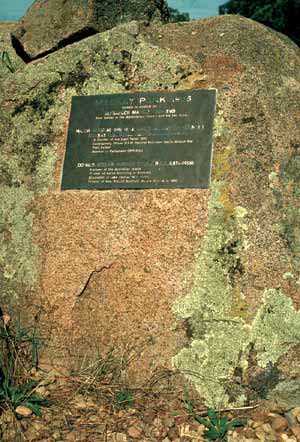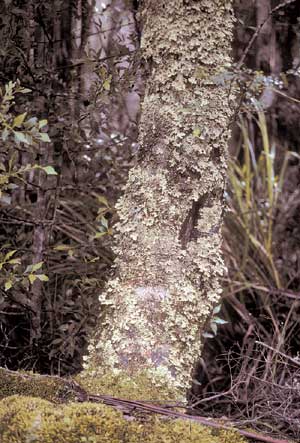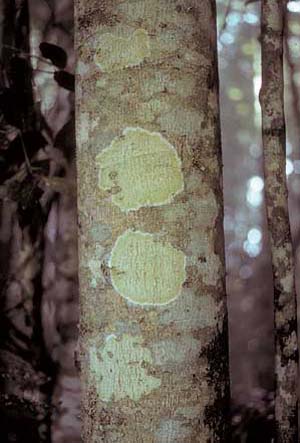Water and Pollution
Wet and Dry
Lichens and bryophytes lack true roots though many species have root-like structures which simply function as anchors. Flowering plants use their roots to extract water and essential minerals from the soil. Lichens and bryophytes absorb water and minerals through their surfaces. Species which grow in arid areas can react very quickly to even tiny amounts of water, such as condensation from morning dew or fog.
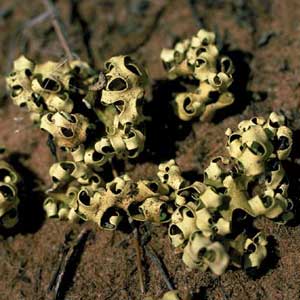 |
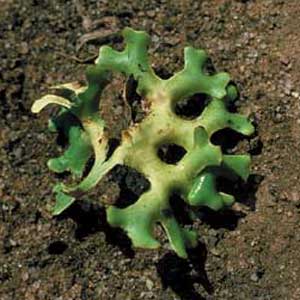 |
| Chondropsis semiviridis, a foliose lichen found on the ground in drier areas, is unusual in that it is not attached to the soil, but free. When it is dry it curls up, when wet it flattens out. | |
Pollution
Lichens are able to concentrate nutrients from very dilute sources, which is a great survival advantage in some of the challenging habitats they live in. However in polluted environments they also indiscriminately absorb and concentrate many toxic substances.
Many lichens are highly susceptible to air pollution, especially to pollution by sulphur dioxide because sulphur damages chlorophyll. If the sulphur level is too high the non-fungal partner will die and the fungal partner, which cannot survive alone, will also die. Different species show varying levels of sensitivity to pollutants and by noting the species occurring in an area and their state of health it is possible to monitor pollution levels. As a general rule fruticose lichens are the least resistant and crustose lichens the most resistant to air pollution. Many bryophytes are also highly susceptible to pollution.
![An Australian Government Initiative [logo]](/images/austgovt_brown_90px.gif)




